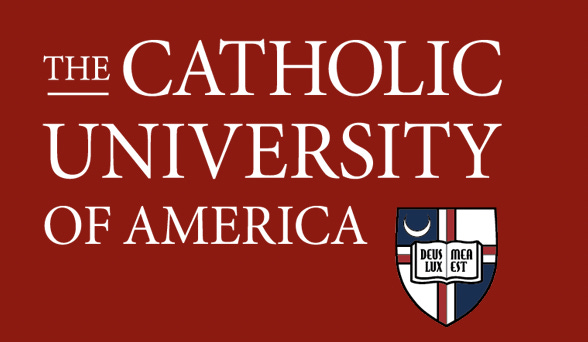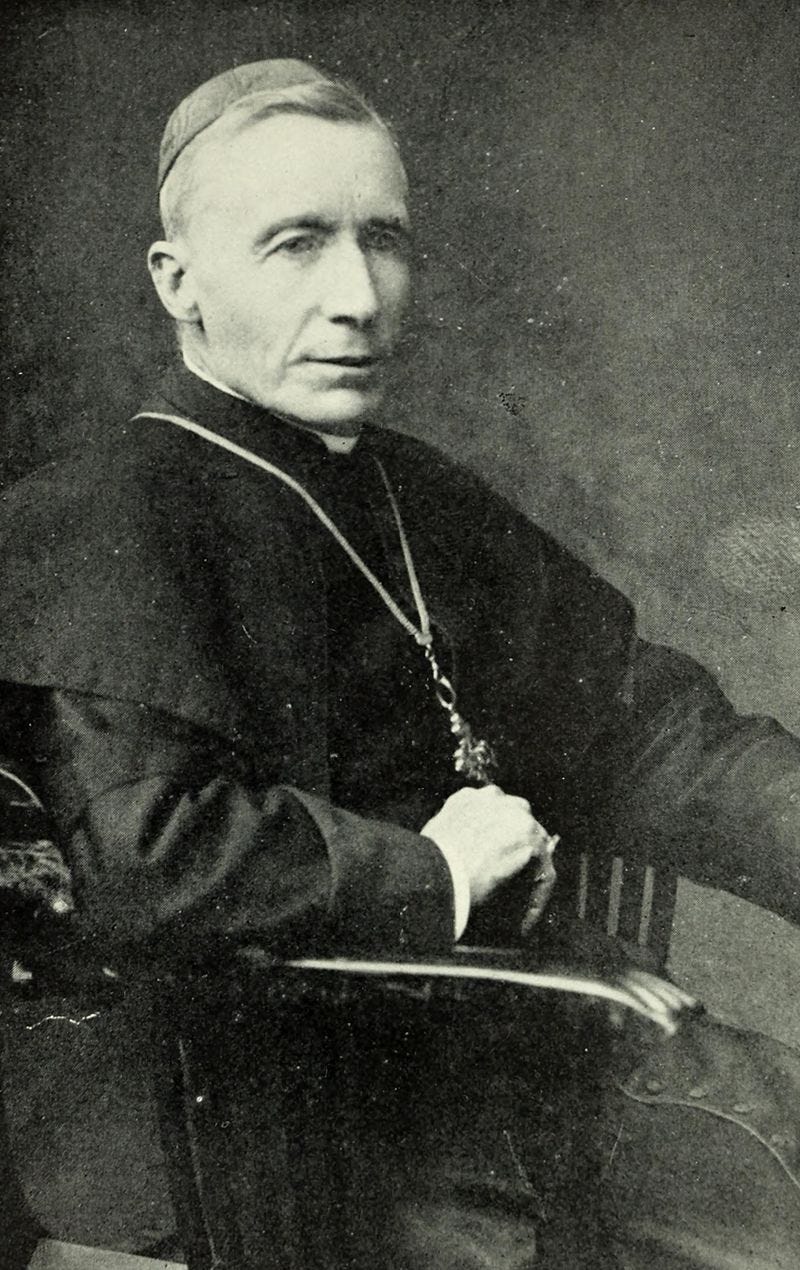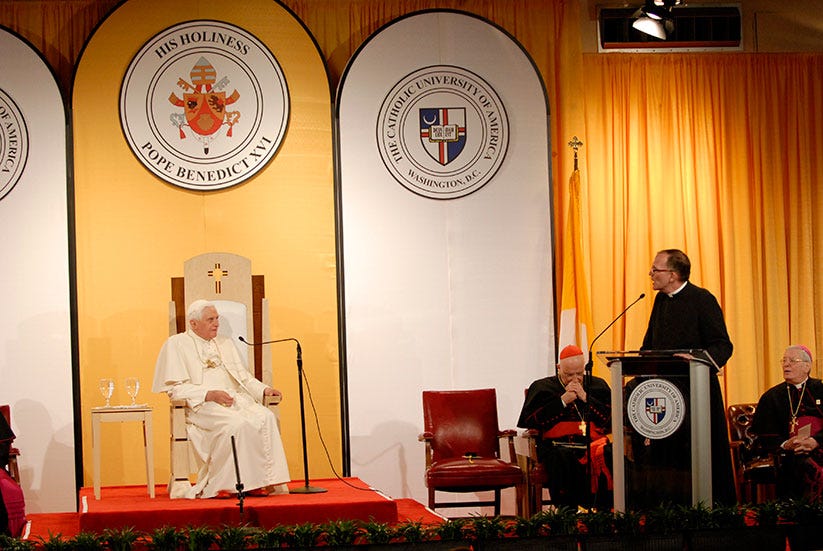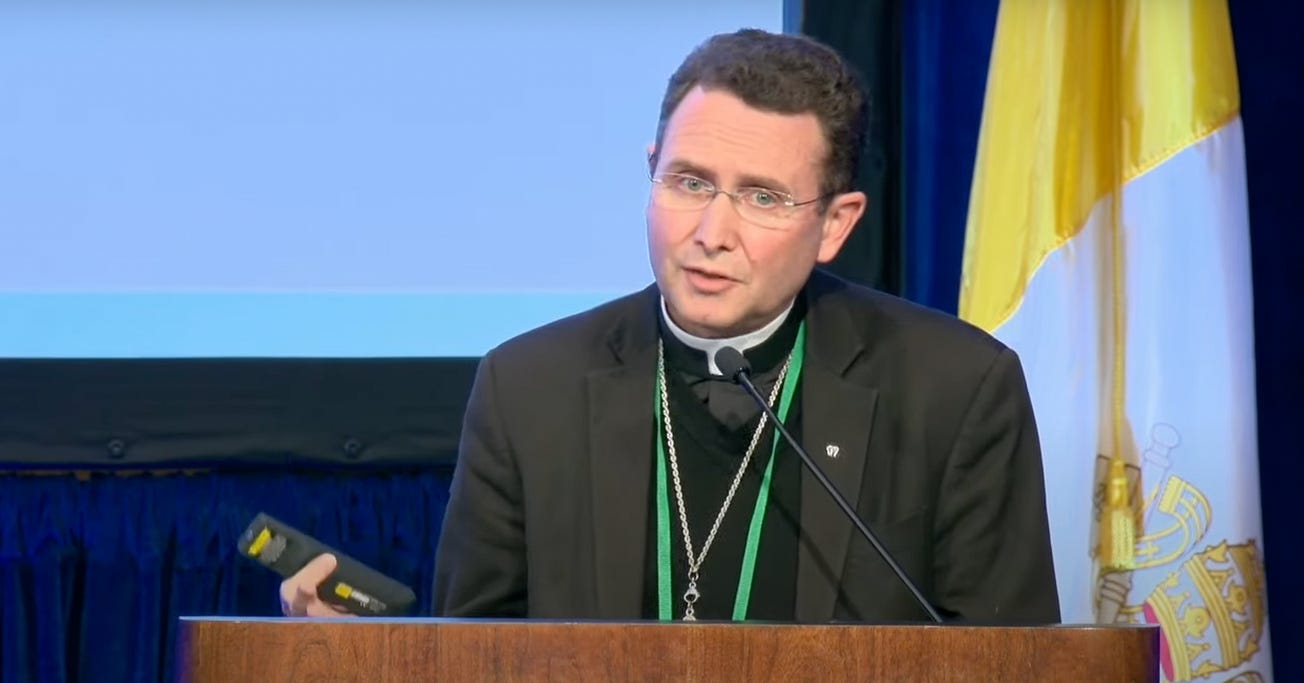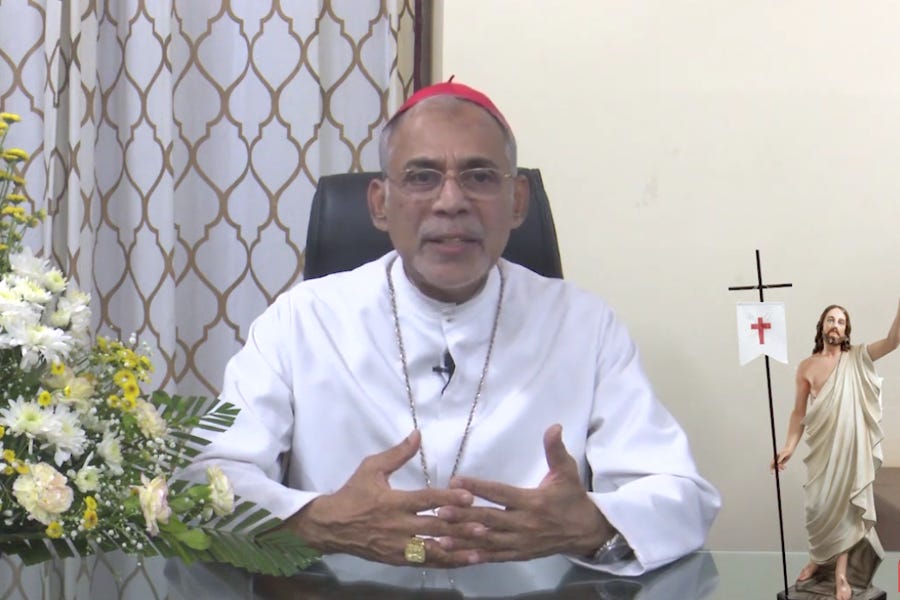John Garvey announced Wednesday that he is stepping down as president of The Catholic University of America at the end of the academic year, kicking off a search for his replacement that will involve the most senior bishops and cardinals in the Church in the U.S., and attract some of the most prominent names in American Catholicism. But why?
Dozens of American universities call themselves “Catholic.” Many have much higher national profiles, and better football teams, than does Catholic U.
But The Catholic University of America is distinct — which is why it emphasizes the “The.”
So, what makes a relatively small university in Washington, D.C., “The” Catholic University? The Pillar explains:
For a start, The Catholic University of America was founded in 1887 by the bishops of the United States as a body. Unlike institutions like Georgetown or Notre Dame, which were set up by religious orders, Catholic U was created by the bishops under a charter from Pope Leo XIII to be the “national” university of the Catholic Church in the U.S.
The university was formally proposed during the 1884 Third Council of Baltimore, the last time the bishops of the United States convened for a formal plenary council.
The university began its life as a graduate school in the sacred sciences, especially intended for priests who would otherwise have had to relocate to Rome for advanced studies.
In his letter approving the project, Leo wrote that “the sciences, and especially those of theology and philosophy, should be taught in conformity with divine faith, so that the forces of revelation and reason combined, should form an invincible bulwark of the faith.”
The Catholic University of America’s link to the pope is especially important to the university and distinct from most other Catholic schools in the country. Its degrees are awarded under the authority of the Holy See, as well as American academic accreditation. As a result, the school is often erroneously referred to as a “pontifical university.” In fact, it does not actually have formal “pontifical” status, because it was established by the bishops of the U.S., not under the direct patronage of the Vatican.
While CUA is not “pontifical,” it does have “ecclesiastical faculties” in the sacred sciences, including canon law, theology, and philosophy — programs overseen directly by the Vatican.
Many people know that Catholic universities are regulated by the Church under the norms of Ex corde Ecclesiae, St. John Paul II’s apostolic constitution, which defines and regulates the “catholicity” of institutions of higher learning.
But ecclesiastical universities and faculties are treated under a separate and more exacting set of norms laid out in St. John Paul II’s apostolic constitution Sapientia Christiana and updated by Pope Francis’ 2017 constitution Veritatis gaudium.
While other Catholic universities may offer courses, or even degrees, in sacred sciences like theology, only ecclesiastical faculties can award the Church’s formal licentiate and doctoral degrees in those subjects, which are required, at least in principle, for numerous positions in the Church.
Possession of an ecclesiastical degree is, in principle, a legal requirement for many roles in the Church, including being appointed as a bishop, teaching in certain Catholic institutions, or serving in many senior chancery functions, like vicar general or judicial vicar.
So, while you can get a degree in theology from a Catholic university like Fordham or Steubenville, that degree does not have the canonical status of a licentiate from a faculty approved by the Holy See, or fulfill the canonical requirements for an ecclesiastical degree when needed. Pope Francis put it this way: “Faculties which have not been canonically erected or approved by the Holy See may not confer academic degrees having canonical value.”
And if you want to study canon law, The Catholic University of America is the only faculty in the country which can grant a degree making you eligible to practice.
In practice — for what it’s worth — the requirement of an ecclesiastical degree is routinely waived for some jobs. Bishops, for example, are usually supposed to have at least an ecclesiastical licentiate to be appointed, but the requirement is often waived, leaning on a provision of the law that allows for someone who is “truly expert” in the sacred sciences, but lacking a degree.
Because The Catholic University of America is one of the few places in the country where it is possible to study (or teach) the sacred sciences at an ecclesiastical faculty, it has seen some of the most prominent American churchmen come through its ranks as students and professors, including the Venerable Archbishop Fulton Sheen and Cardinal Avery Dulles SJ.
It has also served as a regular stopping point for popes when making a visit to the United States, with St. John Paul II, Benedict XVI, and Francis all having visited the campus.
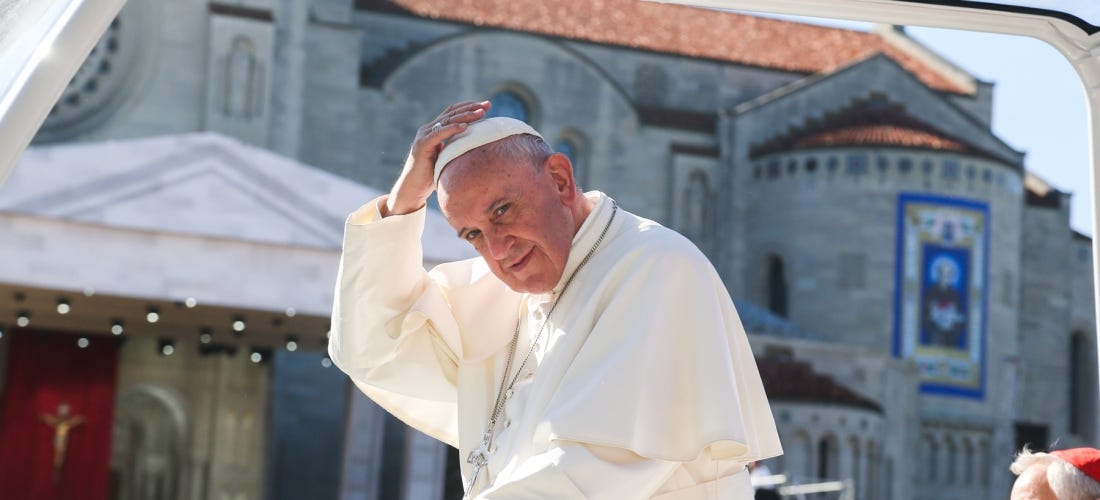
Catholic U’s unique academic and canonical status is reflected its governance, too. The Archbishop of Washington serves as the university’s chancellor, with all the cardinals who lead dioceses in the country serving as members of the board of trustees, along with several diocesan bishops from around the country.
According to the university’s statutes, bishops make up the majority of the university’s "fellows," who are the highest class of board member, and retain reserved powers, including the appointment of the president.
Currently, the board includes, in addition to the active cardinals, Archbishops Allen Vigneron of Detroit, William Lori of Baltimore, Samuel Aquila of Denver, Bernard Hebda of St. Paul-Minneapolis, Jose Gomez of Los Angeles, Joseph Kurtz of Louisville, and Bishops Daniel Flores of Brownsville, Michael Burbidge of Arlington, and John Barres of Rockville Center.

